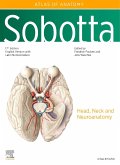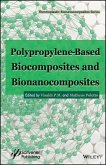
Gebundenes Buch
Materials, Technology, and Applications
1. Auflage
7. Dezember 2022
Wiley-VCH
1134746 000
| eBook, ePUB | 133,99 € | |
| eBook, PDF | 133,99 € |

Statt 149,00 €**
133,99 €
**Preis der gedruckten Ausgabe (Gebundenes Buch)
inkl. MwSt. und vom Verlag festgesetzt.
Sofort per Download lieferbar
VersandkostenfreiStatt 149,00 €**
133,99 €
**Preis der gedruckten Ausgabe (Gebundenes Buch)
inkl. MwSt. und vom Verlag festgesetzt.
Sofort per Download lieferbar
VersandkostenfreiÄhnliche Artikel



Broschiertes Buch
+150 Easy and Irresistible Ketogenic Recipes With a Complete Intermittent Fasting Meal Plan to Lose Weight, Stay Healthy and Reverse Diabetes
12. August 2021
Zoe Nelson

Gebundenes Buch
Head, Neck and Neuroanatomy
17. Aufl.
13. April 2023
Elsevier Health Science / Elsevier, München
C2020-0-00667-5

Gebundenes Buch
Fabrication, Regeneration, and Clinical Applications
1. Auflage
8. Februar 2023
Wiley-VCH
1135043 000

Gebundenes Buch
Design and Development for Biotechnology, Pharmacology, and Biomedicine
1. Auflage
1. März 2023
Wiley-VCH
1134771 000

Gebundenes Buch
1. Auflage
16. Januar 2018
Wiley & Sons / Wiley-Scrivener
1W119283560

Gebundenes Buch
1. Auflage
12. August 2013
Wiley & Sons

Statt 109,00 €**
93,72 €
**Unverbindliche Preisempfehlung des Herstellers
Sofort lieferbar
Versandkostenfrei*Gebundenes Buch
Translating Ideas into Treatments
1. Auflage
17. August 2022
Wiley-VCH
1134571 000

Gebundenes Buch
1. Auflage
14. März 2023
Wiley & Sons / Wiley-Scrivener
1W119904830
Ähnlichkeitssuche: Fact®Finder von OMIKRON
